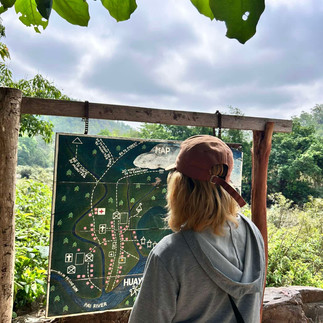Cultural interaction and observation trip to Huay Pu Keng village
- Parami Communications
- May 8
- 2 min read
Updated: Sep 2

Learning does not only happen in the classroom. Students can also learn from extracurricular activities, where they can apply the knowledge and skills they have acquired from the class in real life, just like the recent field trip to Huay Pu Keng village.
Huay Pu Keng is a village in northeastern Thailand, near Mae Hong Son township. It is known for its long neck Kayan residents and other Karenni ethnic groups, including the Kayah, Kayan and Kayaw. The village features traditional houses, religious practices, and local arts and crafts that draw visitors from across Thailand each year.
The field trip, led by second-year student Khu David Ta Keh, was designed to provide an immersive experience for Mae Hong Son Learning Hub student residents and connect them with the culture, traditions, and everyday life of their ethnic communities. Participants will engage with local elders and artisans, observe cultural practices, and reflect on how identity is preserved in a setting shaped by tourism.
Through the field trip, participants were encouraged to 1) build cultural understanding and strengthen Karenni identity by learning local traditions and practices, 2) document the cultural practices and oral histories of the Kayan, Kayah, and Kayaw communities living in the village, and 3) get valuable insights into how the village's ecosystem operates in terms of tourist attractions, Thai government support, and income generation.
During the trip, participants explored the different aspects of the Karenni Tribes (Kayan, Kayah, or Kayaw communities), including cultural preservation and sustainable economic relations with neighboring Thai communities.
One participant noted how strongly the community is committed to preserving its culture. “The Kayan people, especially the women, proudly maintain traditions such as wearing brass neck rings and weaving intricate textiles. Their language, customs, and spiritual practices are still alive, and they are shared with the younger generation and visitors through respectful cultural exchanges.”
This field-based learning approach enhanced students' research, observation, and reflection skills. It reinforced the importance of cultural preservation in an era of increasing globalization and tourism.
The student participants described the most meaningful moments of the trip as involving deep cultural connections and community spirit. From learning traditional weaving with a Kayan woman to wearing Kayah clothing to appreciate their heritage to witnessing villagers of all ages unite to repair a road, each experience highlighted the local culture's pride, resilience, and warmth.
Huay Pu Keng is a living classroom where history, tradition, and identity come alive through meaningful interaction. Students can develop research, reflection, and observation skills through field-based learning.
Highlight photos from the trip to Huay Pu Keng village.

















Comments